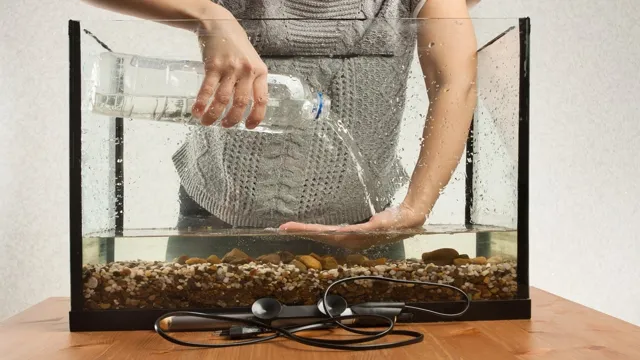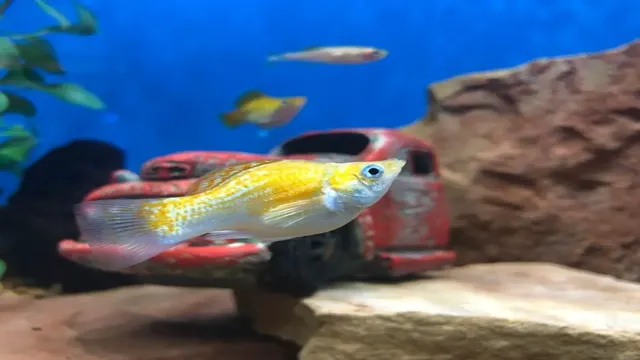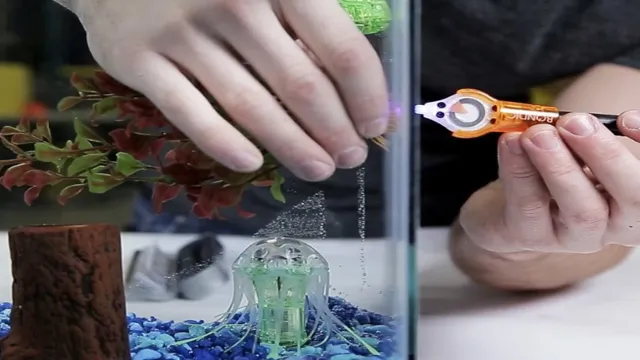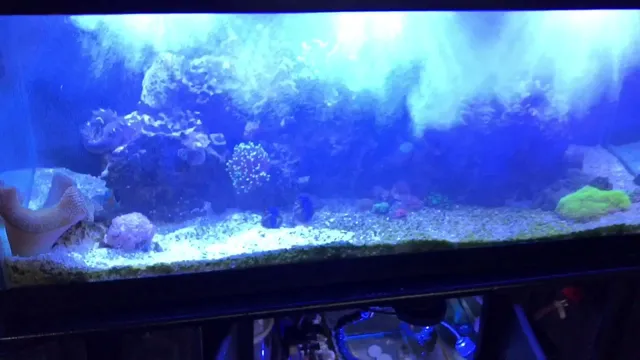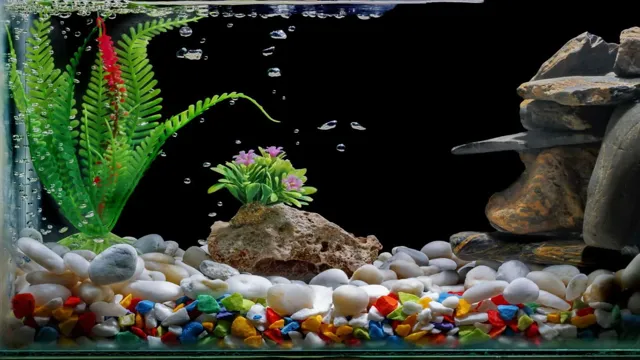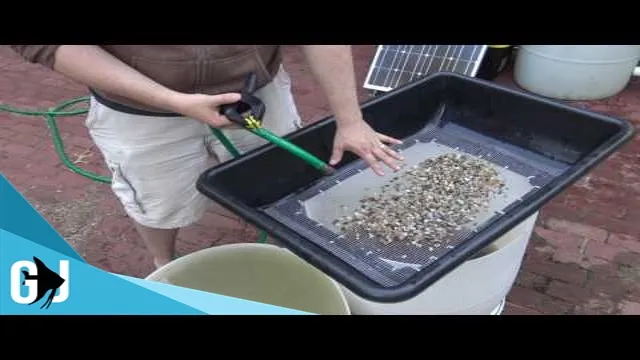Filling your aquarium with water seems like a straightforward task, but it can be quite tricky if you’re not aware of the dos and don’ts. Should you use tap water or distilled water? How much should you fill the tank? What equipment do you need to make the process easier? These are just some of the questions that may come to mind. But don’t worry; we’ve got you covered with this step-by-step guide on how to fill your aquarium with water.
Whether you’re a newbie or a seasoned fishkeeper, read on to make sure you’re doing it the right way.
Choose Your Water Source
When it comes to filling your aquarium with water, choosing the right water source is crucial. The ideal source would be distilled or reverse osmosis (RO) water as it contains no minerals or chemicals that could harm your aquatic pets. However, using distilled or RO water may not be feasible for everyone due to the cost or availability.
If your tap water is safe to drink, it can be used for your aquarium. However, it’s important to dechlorinate the water before adding it to your tank. You can use water conditioners to neutralize harmful chemicals in the water and make it safe for your fish and other aquatic creatures.
It’s also recommended to check the pH level of your water and adjust it to match your aquarium’s specific needs. By choosing the right water source and treating it properly, you can ensure a healthy and thriving aquarium for your aquatic pets. So, whether you use distilled, RO, or tap water, always make sure it’s safe and properly treated before adding it to your aquarium.
Consider Water Quality
Water quality is an essential aspect that needs careful consideration when choosing your water source. There are various sources of water, including tap water, well water, and bottled water. While tap water is the most accessible and affordable, its quality can be questionable in some areas.
On the other hand, well water can be a reliable source of clean water, but it requires proper maintenance and regular testing to ensure its safety. If you opt for bottled water, ensure that its quality meets the required standards. Ultimately, the decision will depend on your location, needs, and preferences.
It’s important to prioritize your health and wellbeing by choosing a safe and dependable source of water. Remember, clean and safe water is crucial for proper hydration and supporting essential body functions. So, whether you’re drinking, cooking, or bathing, always choose a water source that guarantees your safety and peace of mind.

Dechlorination is Important
Dechlorination is an important step to take when choosing your water source. Whether you’re getting your drinking water from a public tap or your own well, it’s important to remove the chlorine before consuming it. Chlorine is frequently used to treat water and remove bacteria and pathogens, but it can have unintended consequences if left in the water.
Chlorine can cause irritation to the skin, eyes, and respiratory system, especially for those with preexisting conditions like asthma. It also affects the taste and smell of the water, which can make it unpleasant to drink. That’s why it’s important to use a dechlorinator to remove the chlorine before drinking or cooking with the water.
By choosing a reliable dechlorinator and removing the chlorine from your water, you can enjoy your water without having to worry about any negative consequences.
Clean the Tank and Add Substrate
When filling your aquarium with water, there are a few key steps you should take to ensure your fish have a healthy and safe environment. The first step is to clean the tank thoroughly, removing any debris or dirt that could harm your fish. Once the tank is clean, it’s time to add substrate to the bottom of the tank.
This is important because it gives your fish a natural environment to swim in and helps to maintain the water’s chemistry. You can choose from a variety of substrates, including gravel, sand, or even live plants. Just be sure to rinse the substrate thoroughly before adding it to the tank to remove any unwanted particles.
Once the substrate is in place, you can slowly begin to add water to the tank, being careful not to disturb the substrate or create any bubbles. With a clean tank and the right substrate, your fish will have everything they need to thrive.
Remove any Debris and Rinse Substrate
tank cleaning When it comes to setting up a new aquarium, starting with a clean slate is essential. Before you add any water or decorations, it’s essential to clean the tank and substrate thoroughly. First, remove any debris, dust, or dirt from the tank with a dry cloth or soft-bristle brush.
This will help to ensure that your aquarium’s environment is suitable for your fish and will prevent any harmful substances from leaching into the water. Then, rinse off the substrate thoroughly to remove any impurities, such as dust or dirt, that may have collected on the surface. You can achieve this by running warm tap water over the substrate until it runs clear. (See Also: How to Care for Aquarium Snails: Tips and Tricks for Happy, Healthy Snails)
Afterward, carefully add your chosen substrate to the aquarium, taking care not to damage any decorations or plants you may have. With a clean tank and substrate, your aquarium will have a better foundation for building a healthy and vibrant underwater ecosystem that you and your fish will enjoy for years to come.
Add Substrate to Tank
When it comes to setting up a fish tank, one of the most important steps is to clean the tank and add substrate. Before adding any substrate, you need to make sure that the tank is completely empty and cleaned properly. Use warm water and a soft sponge or brush to remove any dirt or debris.
Avoid using any cleaning products or chemicals that could harm your fish. Once the tank is completely clean and has been rinsed thoroughly, you can add your chosen substrate. It’s essential to choose the right type of substrate for your fish and plants, as the substrate will impact water chemistry, filtration, and even the health and happiness of your fish.
Sand, gravel, and crushed coral are popular choices for freshwater tanks, while live sand, live rock, and synthetic coral can be used in saltwater tanks. By taking the time to clean your tank and carefully select the right substrate, you can lay the foundation for a thriving and healthy aquatic environment for your fish.
Add Your Equipment to the Tank
When it comes to filling your aquarium with water, there are a few steps you need to follow to do it properly. Firstly, you need to add your equipment to the tank before filling it with water. This includes your filter, heater, and any other decorations you want to include.
Make sure they are all in the tank in their appropriate positions before proceeding. Next, you will want to add your water conditioner to the tank to make the water safe for your fish. This will help remove any harmful chemicals or impurities from the water.
Use a dechlorinating agent to ensure any chlorine or chloramine is neutralized as well. Finally, you can add your water slowly, using a bowl or cup to direct it onto a small plate or saucer that is placed on the bottom of the tank. This will help prevent any agitation that could harm your fish or disturb your substrate.
Fill the tank to the appropriate level, and you’re ready to move on to the next step in the aquarium setup process!
Install Your Heater, Filter, and Other Equipment
When it comes to setting up your aquarium, installing your heater, filter, and other equipment is a crucial step. Before getting started, be sure to research the specific needs of your fish and plants to ensure you select the right gear. First, add your heater to the tank and ensure it’s properly secured.
The heater will help maintain a consistent temperature in your aquarium, which is critical to your aquatic life’s health and wellbeing. Next, add your filter to the tank, ensuring it’s in a location with proper water flow and circulation. Your filter is responsible for keeping the water clean and free of harmful chemicals and debris.
Finally, consider any additional equipment, such as air stones or powerheads, that you may need to ensure a healthy and thriving ecosystem. Remember to regularly clean and maintain your equipment to keep it running efficiently and extend its lifespan. With the right equipment and proper care, your aquarium can be a beautiful and vibrant addition to your home.
Add Decorations if Desired
When it comes to setting up your aquarium, adding decorations is a great way to enhance its appearance. Not only do decorations make your aquarium look more attractive, but they can also provide hiding spots and resting areas for your fish. When choosing decorations, you should look for items that are safe for your fish, such as plants and driftwood.
You can also add rocks or synthetic ornaments to create a more natural look. Remember to rinse any decorations thoroughly before adding them to your tank, as this will help to remove any dirt or debris. Once you have chosen and rinsed your decorations, you can start to add your equipment to the tank.
This includes items such as a filter, heater, and lighting. Make sure you position these items in the tank in a way that allows for easy access, but also provides the best possible conditions for your fish. By taking the time to decorate your tank and set up your equipment correctly, you will create a healthy and attractive home for your fish.
Fill the Tank with Water
Filling an aquarium with water can be somewhat of a process, but it’s relatively easy to do. First, it’s important to ensure that the tank is in its final location as once it’s filled, it can be difficult to move. Once you’ve confirmed the tank’s location, it’s time to fill it with water! Before putting water into the tank, make sure to thoroughly clean it with warm water and a mild detergent.
Once the tank is clean, it’s time to turn on the faucet and fill the tank slowly with water. Using a hose with a gravel vacuum or a pitcher can help avoid any disturbance to the aquarium substrate and avoid debris from being stirred up making it easy to clean later on. It’s also essential to confirm the temperature of the water is suitable for the fish in the aquarium as well as to use a de-chlorinator before adding any fish or plants. (See Also: How to Cycle an Acidic Aquarium: Tips and Tricks for Optimal pH Levels)
Once the tank is full, you can add decorations, plants or other aquascaping that your aquarium requires. It’s important to ensure that water levels are regularly checked, so the tank’s inhabitants remain healthy and happy in their watery abode.
Slowly Pour Water into Tank
When it comes to filling up a tank with water, it’s important to do it slowly and methodically. Pouring water too quickly can cause it to overflow and create a mess, which no one wants to deal with. Instead, start by filling the tank with a small amount of water and then gradually add more, giving the water time to settle and distribute evenly throughout the tank.
You can use a funnel or measuring cup to help control the flow of water and prevent it from splashing or spilling over the sides. Remember to keep an eye on the water level and stop filling when it reaches the desired level. By filling the tank slowly and carefully, you’ll be able to avoid any headaches and ensure that the job is done right the first time.
Leave Room for Any Additional Water
When filling up your tank with water, it’s crucial to leave some room for any additional water that may be needed. This is especially important if you’re using the water for a specific purpose such as irrigation or animal drinking. If there isn’t enough room left in the tank, you may encounter some problems down the line.
For instance, you may need to add more water to the tank after some time, but if there isn’t any room left, the excess water may overflow, causing water wastage and potential damage to the tank. To avoid such issues, ensure that you leave enough space when filling up the tank with water. It’s also essential to know the capacity of your tank so that you can calculate the amount of water needed without overflowing it.
By doing this, you can save water and reduce any potential damage to your tank. So, always remember to fill up your tank with water while leaving some extra room for any additional water.
Turn on Your Equipment
When it comes to filling your aquarium with water, there are a few steps that you can take to ensure that your equipment is all set up and ready to go. First, you’ll want to turn on your equipment, including your filters, pumps, and heaters. This will help ensure that your aquarium is ready for the water that you’ll be adding next.
Once your equipment is turned on, you can start filling your aquarium with fresh water. Be sure to add enough water to cover the bottom of the tank and then slowly pour in the rest of the water until your aquarium is filled to the desired level. It’s important to avoid adding too much water too quickly, as this could cause some of your equipment to malfunction or even break.
Instead, take your time and add the water slowly, allowing your equipment to adjust to the new water level. And of course, don’t forget to treat your water with a high-quality conditioner to ensure that it’s safe and healthy for your fish to thrive in. By taking these steps, you can help ensure that your aquarium is set up properly and ready for your fish to call home!
Prime Your Filter and Turn it on
When it comes to keeping your aquarium clean and healthy for your aquatic pets, turning on your equipment is a crucial step. You need to prime your filter before turning it on by filling it with water from the tank, which helps prevent any air bubbles from forming in the system. Once you’ve done that, turn on your filter and watch as it starts to work its magic.
The filter helps remove any debris, waste, or uneaten food from the water while also aerating it. This not only keeps the water clear but also helps ensure your fish have the oxygen they need to thrive. With regular use, your filter will help maintain a healthy balance in your aquarium by reducing harmful bacteria and keeping ammonia levels in check.
So, don’t forget to turn on your equipment and let it do its job to keep your aquatic pets happy and healthy.
Set Your Heater to the Desired Temperature
One of the most important steps in setting up your heating equipment is to turn it on, and that involves more than just pressing a button. Before you start your heater, you must first set the desired temperature. This is essential to ensure that your home or office is heated to your comfort level.
Whether you prefer a cozy 68 degrees or a toasty 76 degrees, simply dialing in the temperature and pressing start will get your heating system up and running. It’s important to set the temperature at a comfortable level because it can help you maintain a comfortable environment, while also saving you money on your energy bill. Once you’ve set the temperature, you can then proceed to turn on your equipment.
Whether you have a traditional furnace or a high-tech smart thermostat, the process is simple and easy, ensuring your comfort all winter long. (See Also: How to Clean Aquarium Sand in Tank: A Step-by-Step Guide to Maintaining a Healthy Environment)
Check for Leaks and Adjust Equipment if Necessary
Before firing up your equipment for the season, it’s important to check for leaks and make necessary adjustments. This step ensures that your equipment is safe to use and operates effectively. In order to check for leaks, you’ll need to inspect your equipment for any visible damage such as cracks or rust.
It’s also important to check all connections, joints, and seals to ensure that everything is tight and secure. If you do find a leak or damaged part, it’s important to address the issue right away. Making any necessary adjustments to your equipment, such as changing the oil or replacing worn parts, will also ensure that it’s functioning at its best.
Taking the time to properly inspect and adjust your equipment will save you time and headaches down the road, allowing you to work more efficiently and effectively.
Conclusion
Filling an aquarium with water may seem like a simple task, but it’s important to do it right to ensure a happy and healthy aquatic environment for your finned friends. Remember to remove any chlorine or other harmful chemicals from the water, keep the temperature ideal for your fish, and take care not to splash water all over your floor. With a little patience and attention, you’ll soon have a thriving underwater world to enjoy and admire.
So go ahead, dive in and make a splash!”
FAQs
What is the best way to fill an aquarium with water?
The best way to fill an aquarium with water is to use a hose or bucket to add water slowly and steadily, making sure not to disturb the substrate or any decor already in the tank.
Can I use tap water to fill my aquarium?
It is generally safe to use tap water to fill an aquarium, as long as it has been conditioned to remove any harmful chemicals such as chlorine or chloramine.
How much water should I add to my aquarium when filling it?
The amount of water you should add to your aquarium when filling it will depend on the size of your tank. A general rule of thumb is to fill it about 1/3 full, then make any necessary adjustments after adding your decorations and equipment.
Should I add any chemicals or supplements to the water when filling my aquarium?
Depending on the specific needs of the fish or plants in your tank, you may need to add certain chemicals or supplements to the water. Some common examples include water conditioners, pH adjusters, and fertilizer for plants.
How long should I let the water cycle before adding fish to my aquarium?
It is recommended to let the water in your aquarium cycle for at least a few days before adding any fish. This will allow the water to stabilize and any harmful chemicals or excess nutrients to be filtered out.
What temperature should the water be when filling my aquarium?
The water temperature should be consistent with the temperature requirements of the fish or plants in your tank. A general range for tropical freshwater fish is between 75-82°F.
Should I use a water testing kit when filling my aquarium?
It is recommended to use a water testing kit when filling your aquarium to ensure that the water is safe and healthy for your fish and plants. The kit can check for the levels of ammonia, nitrite, nitrate, pH, and other important parameters.

